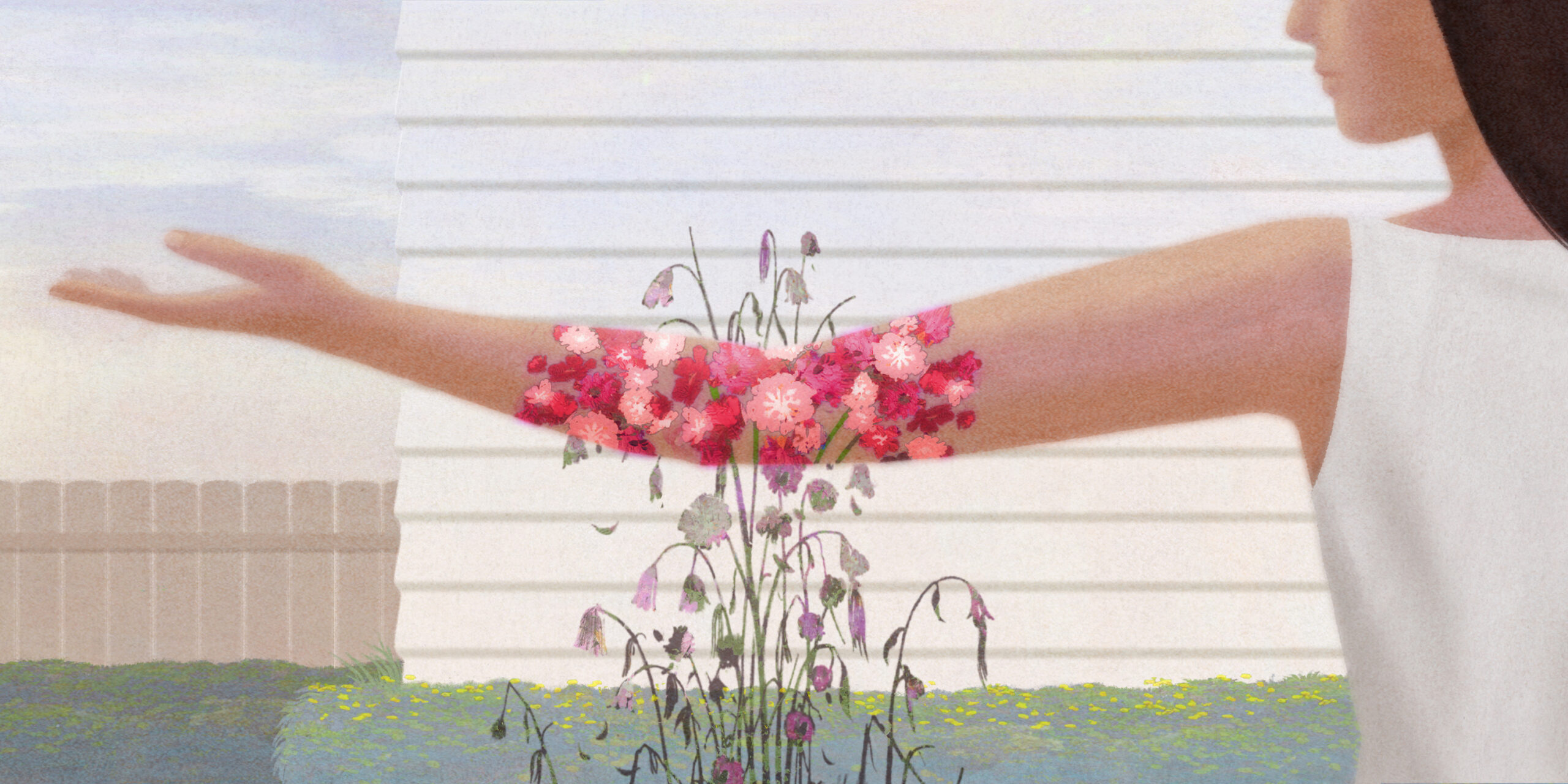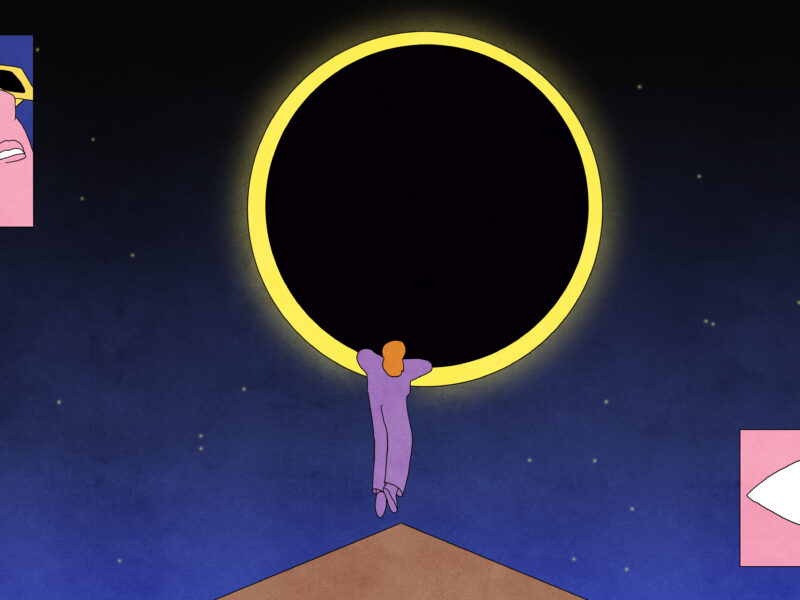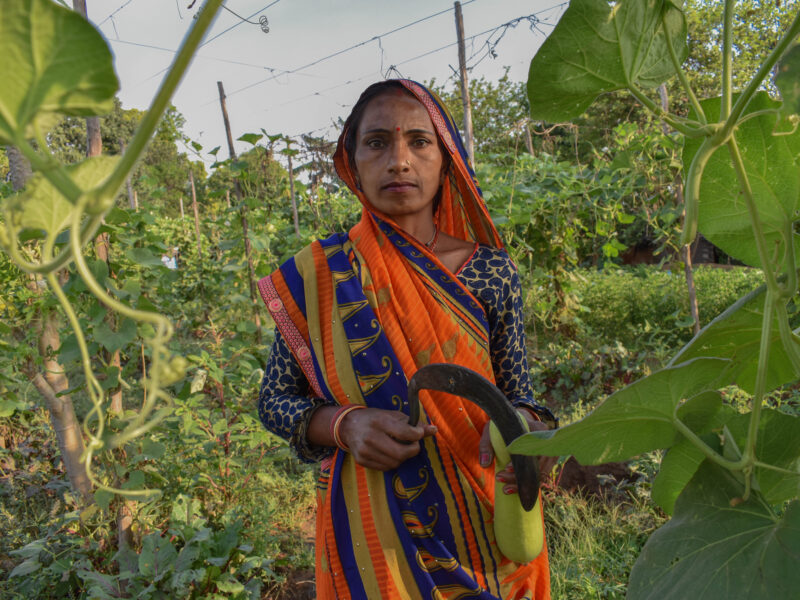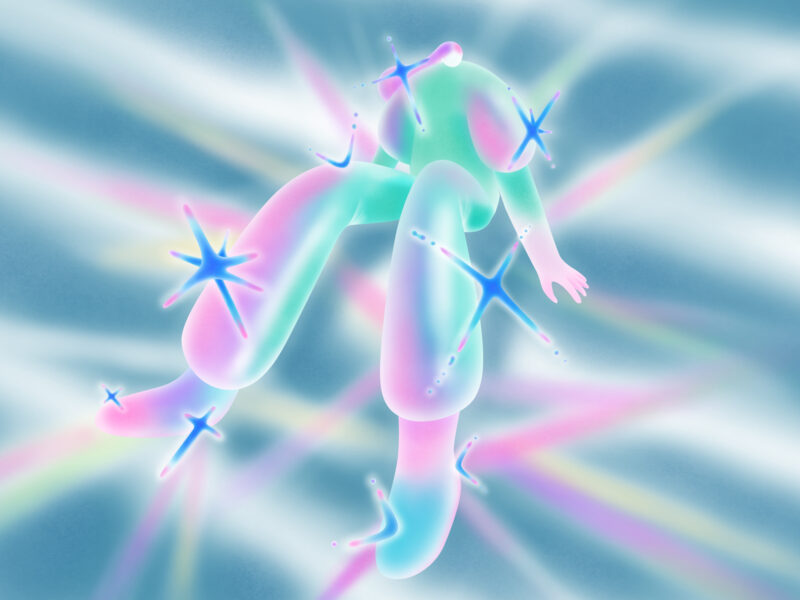How botanical tattoos help me immortalize what is impermanent.
In both Spanish and Portuguese, one word for “season” is “temporada.” When I started learning both languages at once, I noticed their similarities and differences, the way they seemed to weave together and diverge, never on truly parallel tracks. It makes it difficult, sometimes, to pick the right word in the right language at the right time—but anyway, not here. Temporada; temporary. Lasting for only a short period of time. This is what a season is: The winters, however crushing, will end; the summers, however beautiful, will, too.
It’s a truth I think I can outrun every year.
So, I create permanence in other ways. I got my first tattoo at 24, the word “crybaby” as a direct response to the grief I felt after the rapper Lil Peep died. I had met him, written about him, and was so devastated that such a bright, sweet light had been snuffed out. It felt like a way to memorialize him, a permanent reminder of his own ill-thought-out face tattoo. After that, I got more tattoos: first, my sister’s name in a loveheart on my upper arm and my now-husband’s first initial behind my ear after a few months of dating. Then, I refined the process, getting small, botanical tattoos based on flowers and plants I’d seen in my life as a way to preserve them. The habit has become ritual.
Despite my aversion to impernance, I’ve always loved plants. As a child, I helped my grandad cultivate his garden. As a teenager, I spent a week doing work experience at a flower shop, leaving with a short-lived desire to become a florist myself. As an adult, I’ve combined the two: filling my home with fresh flowers and caring for an ever-growing army of plants. When I go out, I see flowers and plants everywhere, noticing the way they change day to day. My camera roll is filled with hundreds of photos of them that look identical to an outside eye.
But flowers, like seasons and people, are temporary. Losing them, the sight of abundant leaves on my street, is a grief that comes with each painful autumn, a reminder of the temporada. Which is why I found a way to immortalize them, to avoid that loss, with tiny needles and pots of color. My body becomes a map of the places I’ve been, and a memorial to the things I have lost.
Now, I hunt for the ones that feel right to make permanent, collecting them like mental notes—recently, a peony-flowering tulip that I bought at the side of the road in the Netherlands, a jacaranda in a Lisbon spring, a sprig of desert lavender in Joshua Tree. I won’t get them yet, because I live seasonally, per the temporada, and they would get in the way of the life I enjoy living. I am a summer child, a water baby most alive in the sun and sea. In the summer, I swim and I sit outside and I get dirty—all things you can’t do with a fresh tattoo. But in the winter, when I can’t do the things I like, when the flowers have long died, I immortalize the summer past on my skin.
CALIFORNIA
When I was 25, I lived in Los Angeles for three months with my now-husband and small dog. I love being in California—least of all because the seasons never change—because I have friends, a life, things I love to do there. When I visit, I try to spend as much time as I can exploring the mountains, the desert, the ocean. When my three months were up, I knew I wouldn’t be back for a while. That home was temporary, never truly mine. I got my first botanical tattoo on this trip, at the studio of June Jung, a legendary Korean artist, to remember the plants I had seen in this place I couldn’t permanently call home. I commissioned a guest artist to dedicate a small strip of my forearm to LA: palm leaves, a succulent, a rose, a California poppy. It started my journey of botanicals, but it wasn’t quite permanent enough—a run of taking NSAIDs without realizing they thinned my blood meant I had to return again to have it topped up by June herself in November.
It felt like an excuse, really, to do things over again, if only for a few days.
WEDDING BOUQUET
For my wedding, I’d always wanted dried flowers. We could keep them forever, I reasoned, and wouldn’t have to throw them out after watching them slowly die in our living room. We asked a local flower artist to do everything in pink and white preserved roses, gypsum, and snapdragons: buttonholes, centerpieces, my sister’s bouquet. But I asked her to add some fresh flowers to mine, to make it a little different: seven pink roses. The florist put them in tiny vials of water so they would last, even though I knew they would die—they always do. On the day of our wedding, they looked so beautiful, so fresh and alive that they were worth the loss after we left for the honeymoon. I took tens of photos, already knowing I would show them to my tattoo artist when I got home. Before leaving, I removed the roses from the rest of the bouquet so they couldn’t rot onto the dried gypsum. In February of 2022, almost six months after the roses had died, I got the full bouquet tattooed on my upper arm. The rest of it, the gypsum and snapdragons and dried fan palms, sits on a shelf, forever preserved.
CHERRY BLOSSOM
In early 2020, I had a trip booked to Japan, in part to finally see the sakura trees. I first fell for them after seeing them in the anime Cardcaptor Sakura as a child, and they have always been the most painful representation of impermanence. You can’t really plan to see the blossoms—but you can spend thousands of dollars trying. The trees might only bloom for a couple of weeks, and when those weeks are is dependent on so many factors, changeable year to year.
The trip to Japan was canceled. I do, however, have a few apple and cherry blossom trees on my street, and I keep an eye on them every year, knowing that when I see tiny buds start to form, the frost of winter is ending. Better days are coming, days when I might walk without a jacket or swim in the sea that sits cold and close to my home. I always knew I wanted those trees on my body forever, I just wasn’t sure where—and then, it was chosen for me. In March of 2021, I got a pretty serious injury when my dog fell in the gap between our train and the platform as we were disembarking. Without thinking, I threw myself on the ground, dove into the gap, and pulled her up. I felt fine in the moment, but I soon saw blood blossoming on the knees of my blue jeans. As the adrenaline wore off, my collarbone started to hurt so badly that I couldn’t move without crying out. Later that week, a physiotherapist told me that I had torn my rotator cuff. A short while later, I asked the same artist who’d later tattoo my wedding bouquet on me if she would give me a cherry blossom branch on my collarbone, near the site of the injury. I wanted the branch dotted with buds and blooms, little chances to grow before the petals started to fall. Not long after the tattoo was done, my street was littered with pink, and my sakura healed into my skin.
OLIVE BRANCH
As the myth of Persephone, the Goddess of Spring, goes, Hades, the God of Death, was so taken by her beauty that he tricked her into marrying him, dragging her to the Underworld to make her his queen. Her mother, Demeter, the Goddess of the Harvest, was so distraught by the kidnapping that she allowed everything on Earth to die. When Persephone’s father Zeus found Persephone and tried to take her home, Hades tricked her into eating six seeds of a pomegranate, tying her to the Underworld so that she had to stay with him for three (or, in some versions, six) months of the year. To me, the story is the ancient Greeks’ way of understanding winter, of coping with the fact that we have to live for so long in darkness: a symbol of Demeter’s grief at losing her daughter, year after year.
On our honeymoon, my new husband and I visited Demeter’s Temple on the island of Naxos and learned more about the ways her followers paid homage to her, in part through vegan sacrifices where they let the juices of fruit and vegetables run. Along the path to the temple are olive trees, some of the brightest, greenest, healthiest I have ever seen. I took photos and brought one home—the olive is shriveled now. But my husband and I brought the photos to the artist who’d given us our first matching tattoos four years earlier, and now Demeter’s olives sit on my forearm and his collarbone, never to die, no matter what tricks Hades pulls.
MY GRANDAD’S FLOWERS
From whom did I inherit this fear of flowers dying, of the changing seasons? My grandad always told me that he loved flowers, but that they were “pointless,” that they always “just died.” It made him sad to watch them wither, so instead, he cultivated more practical things: tomatoes, onions, a compulsively well-trimmed hedge. Things that “made sense,” that “did something,” that could nourish us.His partner, on the other hand, preferred to plant flowers that she could look at and enjoy, that could nourish her in other ways. He was tasked with caring for those flowers after she died, and he did so, proudly, while memorializing her with a fake orchid in his home. When he was in the hospital dying, I went to spend some time in his house, a home that I had come to know as my own over the years I’d been visiting it. Down the side of his front garden, impossibly, there were roses and snapdragons blooming in his absence. His neighbors had taken over the work, and the flowers had kept living despite the ever-changing conditions of their care. I took photos, surprised to see two of my favorite flowers together. I used to joke with him that there was one way of keeping flowers alive—–the tattoos that were starting to cover my arms. A few months after he died, I sent the photo of the snapdragon and rose to my artist and asked her to drill them into my ankle, a permanent reminder of the flowers my grandad had kept alive despite believing he couldn’t. The tattoo is just one way that I keep him with me, too.



